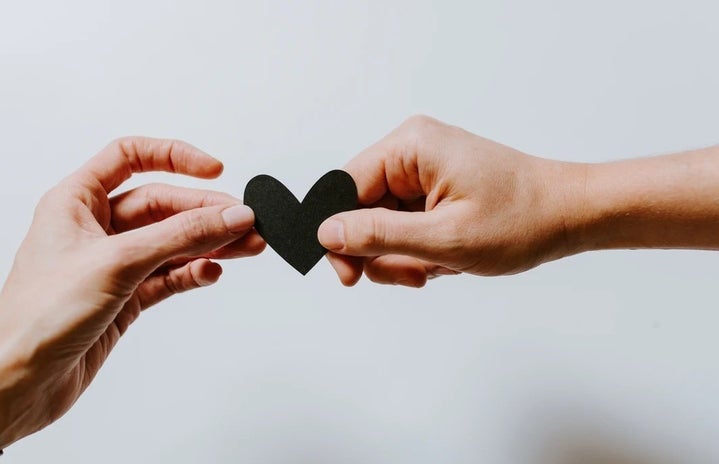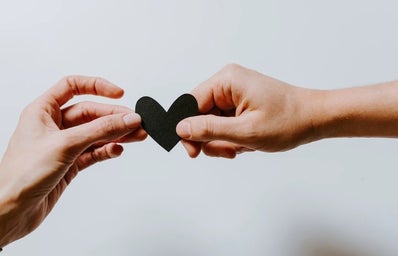The Her Campus National Editors write about products we love and think you’ll love too. Her Campus has affiliate partnerships, so we get a share of the revenue from your purchase. All products are in stock and all prices are accurate as of publication.
The day my therapist told me I have an anxious attachment style was the beginning of major improvements in my relationship. I had heard about attachment styles from social media before, but I never understood the full extent of how they drive behaviors in relationships. I had been really struggling to discuss my needs in my long-term relationship, and I had a crippling fear that voicing my dissatisfactions would send my partner running for the hills. I felt that I was being too needy, overdramatic, and that I could get over my feelings if I just suppressed them enough. My therapist assigned me a book to read called Attached, by Dr. Amir Levine and Rachel Heller, and it felt like the authors had been listening to my thoughts!
Dr. Levine first became interested in attachment theory when he was working with new mothers to create strong bonds with their babies. As he researched further, he found that adults often show the same patterns of attachment in relationships as children do with their parents. The book details the three main attachment styles: anxious, avoidant, and secure, and contains a quiz to determine your attachment style and your partner’s style. After you determine your attachment style, Attached explains how each style shows up in everyday life, and how you can manage conflicts that arise from a triggered attachment style. Here is a brief description of each style according to the book:
Anxious Attachment
Levine and Heller define the attachment system as “the mechanism in our brain responsible for tracking and monitoring the safety and availability of our attachment figures.” Essentially, this is the part of our brain that kept us aware and connected to our parents in childhood and it works in the same way in our adult relationships. People who are anxiously attached have an extra sensitive attachment system and therefore are hyper-aware of the slightest indication of trouble within a relationship. This can be a blessing and a curse, however, because while anxious people can often tell earlier than others when something is wrong in their relationship, they also have a tendency to jump to conclusions before receiving all of the information. When an anxious person’s attachment system is triggered, they become consumed with thoughts that will reestablish closeness with their partner; these thoughts are called activating strategies. Activating strategies can only be soothed once the partner reestablishes security in the relationship. Here are some examples of activating strategies:
- Having difficulty focusing on anything besides your partner.
- Putting your partner on a pedestal.
- Believing that this is your last chance for love.
- Believing that even if you are unhappy, it is better than letting go of your partner.
If any of these thought patterns sound like you, you just might have an anxious attachment style. Anxiously attached people often become attached very quickly and have a hard time letting go of relationships, even after they end. If you are an anxious person, Levine and Heller suggest that you need a partner that is available to you and that will offer reassurance to avoid triggering your activating strategies. When activating strategies are triggered, they can lead to protest behavior, which is defined as “any action that tries to reestablish contact with your partner and get their attention.” Protest behaviors often become harmful to the relationship and are counterproductive to their mission of finding closeness with a partner.
Dr. Levine recommends that people who have an anxious attachment style should seek out partners with secure attachment. Anxious people thrive on supportive, intimate relationships that are long-lasting, which a securely attached partner can provide. Unfortunately, anxious people happen to be most attracted to avoidant individuals, but this pairing is the least compatible and most likely to fail. Throughout the rest of the anxious attachment section, Levine and Heller give great advice for anxious people about how to find the right partner, and how to adapt if you are already involved with an avoidant partner.
Avoidant Attachment
People with the avoidant attachment style often view dependency or need as a weakness, and they crave self-sufficiency. The avoidant style is characterized by the tendency to keep partners at a distance and to avoid intimacy, even in long-term relationships. Avoidant people tend to be overly critical of their partners, especially if they view their partner as being “needy.” Avoidants seem to despise others for having needs while being immune to those needs. However, this is not necessarily the truth. Studies have found that when avoidant people do not have the mental capacity to repress their feelings, their true fears of abandonment and loss rise to the surface.
While anxiously attached people use activating strategies to grow closer to their partner, avoidant people use deactivating strategies in order to maintain space. Deactivating strategies are “any behavior or thought that is used to squelch intimacy.” These strategies suppress the attachment system and the needs of avoidant individuals. Some common deactivating strategies are:
- Focusing on the small imperfections of your partner.
- Pining after an ex.
- Avoiding physical closeness.
- Pulling away when things are going well.
These are just a few of the thoughts and behaviors that may indicate that you have an avoidant attachment style. Deactivating strategies are meant to create distance from one’s partner, and in doing so they often harm the relationship, especially for an anxious partner. These strategies are a defense mechanism, but they also prevent avoidant people from achieving true closeness and happiness within a relationship.
Levine and Heller claim that avoidant individuals interpret their partner’s behaviors differently than people with other attachment styles. Avoidant people are often unaware of these harmful thought patterns that repress intimacy and create space in the relationship. Some of these thought patterns include:
- Mistaking self-reliance for independence.
- Seeing the worm instead of the apple; focusing on the flaws of your partner.
- Longing for the phantom ex; obsessing over “the one that got away.”
- Looking for “the one.”
Although the avoidant attachment style craves solitude and rejects closeness, hope is not completely lost for avoidant people. Levine and Heller insist that it is possible for avoidants to change their thoughts and behaviors and eventually welcome closeness with their partner. In the rest of the avoidant attachment section, the authors detail several strategies for avoidant people to become more comfortable with intimacy; but, their main piece of advice is introspection and counseling. The authors state that avoidant individuals often cannot accept that they are the problem in relationships and this self-awareness can only be achieved through hard work and self-reflection.
Secure Attachment
Secure attachment is the goldilocks of the three styles. Secure people thrive in relationships. They are emotionally in tune with their partner, they are reliable and trustworthy. The securely attached doesn’t feel threatened and they aren’t afraid to commit. Being the most perfect of attachment styles, even Levine and Heller joke that it is almost boring in comparison to the other types of attachment. However, the authors acknowledge that there is much to learn from the secure attachment style.
People with secure attachment were found in studies to have higher success rates in relationships with both another secure person and with an anxious or avoidant partner. This is referred to as the “buffer effect” and suggests that secure people act as a buffer in relationships with highly emotional (anxious), or distant (avoidant) individuals. When looking for a common personality trait between secures, studies found that secure people came in every variety of personality, with only one common trait: all secure people have a high level of emotional intelligence, they are very good at interpreting their partner’s emotional cues and responding to them in a productive way.
Another study found that people with secure attachment are virtually immune to the fear of threats in relationships. Unlike avoidant people who subconsciously suppress their fears of abandonment and loss, secures have no need to repress these fears because they are simply not a concern. But, secures are not heartless, when asked to specifically imagine a scenario of loss and heartbreak participants reacted as anybody would; distressed, sad, and afraid. Secure people are “simply [not] as sensitive to the negative cues of the world.” Secure people are also characterized as:
- Great conflict busters.
- Mentally flexible.
- Effective communicators.
- Not game players.
- Comfortable with closeness and boundaries.
- Secure in their power to improve the relationship.
Although secure people are perfect partners and can bode well with an array of attachment styles, they can sometimes fall victim to abusive relationships due to their blind optimism. The authors note that in most cases of secure and non-secure couples, the anxious or avoidant person will become more secure over time as their attachment system is soothed by the security of the relationship. Levine and Heller have also found that secures tend to be vigilant in cutting ties with people they intuitively know will not work out, even early on in the relationship. Despite their keen intuition, in some cases the secure partner can find themselves unable to leave a toxic or abusive situation. Attachment scientists attribute this to the secure person’s tendency to forgive easily, to feel responsible for their partner’s well-being, and to not dwell on negative emotions. The secure attachment chapter contains great tips for picking a partner with a secure mindset, but overall secure people tend to have great instincts when choosing a partner already.
Final Thoughts
Attachment science, and Attached, have helped me to realize that everyone has different needs and they are all valid. This book offers so many great tips and tools to achieve a more secure attachment for yourself and how to work with your partner if you have opposing attachment styles. Attachment science is an incredible resource in the world of relationships and dating. Understanding your attachment style will allow you to recognize and improve behaviors that may be harmful to your relationships, as well as teach you how to find a partner that will meet the needs of your attachment system.
In my own relationship, understanding my attachment style has greatly helped me to not only accept that my fears are valid, but that I too can improve my behaviors that have been harmful. I think that everyone should read Attached, or even research further on the internet, to learn more about attachment science and how it can be used in everyday life.


